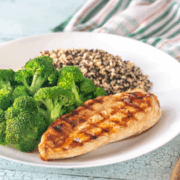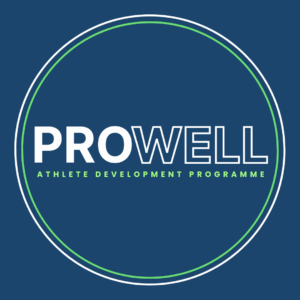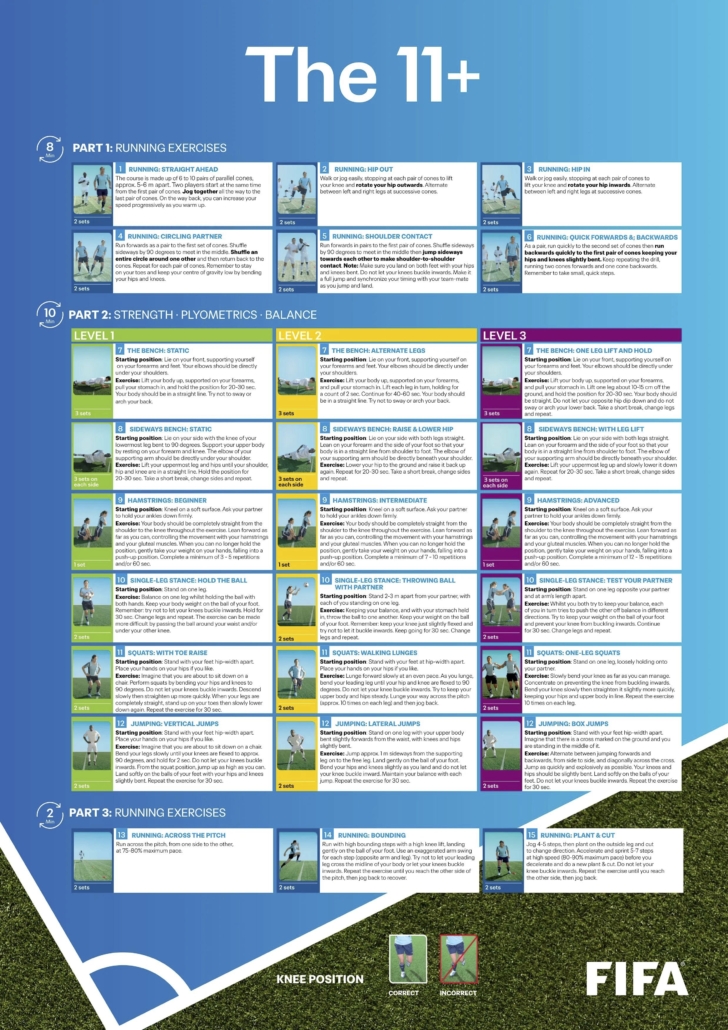
GIS Partners with UNIPRO to Offer Flexible Online Degree Pathways for Footballers
The Global Institute of Sport (GIS) is proud to announce a new partnership with UNIPRO International Football Academy, a UK-based academy that combines elite-level football development with education for international student athletes. This collaboration gives footballers the chance to study online while continuing to train and compete at a high level.
Flexible Online Degrees for Footballers
Through this partnership, GIS will deliver its online undergraduate degrees in Sports Management and Football Coaching to UNIPRO players. This approach provides a balanced pathway for both sporting and academic development, helping players gain a recognised university qualification alongside their football career. UNIPRO players will also be able to join GIS’ students from around the world who are studying online and on-campus in stadium-based campuses in Miami, Brussels and Sydney at its iconic global sports summit study tours to the UK, USA, Canada and Australia.

Supporting Footballers On and Off the Pitch
UNIPRO supports international footballers by providing opportunities to train in a professional environment while pursuing academic goals. Its programmes, which include degree pathways, gap-year experiences and full-time football development, focus on nurturing well-rounded athletes who thrive both on and off the pitch.
Dr Mike Walsh, Provost of GIS, said, “This partnership with UNIPRO is a fantastic step forward in supporting the dual careers of aspiring athletes. At GIS, we are committed to helping students develop both their sporting ambitions and their academic potential. By delivering our online degrees to UNIPRO players, we are giving them the tools to build sustainable futures beyond their playing careers.”
Geraldine Jackson, CEO of UNIPRO International Football Academy, added, “At UNIPRO, we believe education and football should work together, not in competition. Our mission is to give student-athletes the flexibility and opportunity to pursue both. To study, train and grow without limits. Our partnership with GIS strengthens that vision by allowing our players to earn a world-class degree while continuing their football development. Together, we’re shaping the next generation of athletes who are not only technically excellent, but also resilient, educated, employable and ready for life beyond the pitch.”

About UNIPRO
Founded in 2022, UNIPRO International Football Academy offers international student athletes the opportunity to study, train and live in the UK. The academy provides a range of flexible programmes, including training-only pathways, in-person or online degree study options and gap-year experiences. UNIPRO is led by CEO Geraldine Jackson alongside Director of Football Paul Dickov, the former Manchester City and Scotland striker.
GIS’s Commitment to Athlete Development
This partnership reflects GIS’s mission to support athletes in achieving excellence both on and off the field. By combining high-quality, flexible online degree programmes with UNIPRO’s professional training environment, GIS helps players build knowledge, skills and career opportunities for life after sport. The collaboration underscores GIS’s commitment to developing the next generation of sports leaders and professionals while ensuring athletes can pursue their passions without compromise.

Sleep, Rest Days & Performance Gains
When people talk about high performance in football, they usually focus on how hard you train, how many hours you spend on the pitch, or how intense your gym sessions are. But here’s the truth: real progress happens during recovery.
Muscle repair, mental reset, energy restoration—that’s the work your body does when you stop pushing and start recovering. And if you don’t take recovery seriously, all that hard training can quickly lead to burnout, fatigue, and injury.
So let’s break down one of our ProWell topics, why recovery matters and how to build a better regime around sleep, rest and routine.
Why Recovery Matters More Than You Think
Football is physically demanding. Sprinting, tackling, pressing, decision-making—your body and brain are under constant pressure. Without proper recovery, performance drops, reaction times slow, and your injury risk skyrockets.
You don’t get stronger during training—you get stronger during recovery.
Training breaks your body down. Recovery builds it back up stronger.
That means:
-
Muscle fibres repair and grow
-
The nervous system resets
-
The immune system gets a boost
Neglecting recovery—especially with the added pressure of uni deadlines, exams, or travel—leads to chronic fatigue, poor sleep, lower mood, and eventually, overtraining.
Sleep: The Most Underrated Performance Tool
Sleep isn’t just about feeling rested—it’s when your body does some of its most important work.
During deep sleep, your body releases human growth hormone (HGH), which:
-
Repairs muscle tissue
-
Builds stronger bones and tendons
-
Restores your energy reserves
How Much Sleep Do Athletes Need?
-
18–22-year-olds: Aim for 7–9 hours a night
-
During heavy training periods: Add an extra 30–60 minutes where you can
Poor Sleep? Here’s What That Can Look Like:
-
Slower reaction time and decision-making
-
More injuries (athletes who sleep less are almost twice as likely to get hurt)
-
Mood swings, increased anxiety, lack of motivation
How to Build a Better Sleep Routine
Here are five small changes that can make a big difference:
-
Stick to a consistent bedtime and wake-up time. Even on weekends
-
Avoid screens an hour before bed. Blue light affects your melatonin levels
-
Keep your room cool, dark and quiet. Ideal temp is 18–20°C
-
Establish a pre-bed routine. Read, journal, stretch, or use breathing exercises
-
Limit caffeine after 2pm and skip heavy meals late at night
Bonus tip: Try keeping a sleep journal or use a fitness tracker to spot patterns.
Active Recovery vs. Full Rest
Recovery doesn’t mean doing nothing. In fact, active recovery can help your body flush out waste, reduce soreness, and speed up muscle repair.
Great active recovery ideas:
-
Light cycling or swimming
-
A walk outdoors
-
Mobility or yoga sessions
-
Foam rolling and stretching
-
Contrast therapy (hot/cold showers or baths)
The key is to keep it low intensity and restorative.
Plan Your Rest and Recovery Days, Don’t Leave Them to Chance
Balancing football, academics, social life, and downtime is hard. But training without rest won’t help you improve. It just leads to plateaus or injury.
Schedule at least 1–2 full rest days each week, depending on how hard you’re training.
Signs you’re under-recovering:
-
Constant soreness or stiffness
-
Your performance drops despite more effort
-
Poor sleep, irritability, or loss of appetite
Remember: Rest isn’t lazy. It’s part of the plan.
Nutrition & Hydration: Recovery Starts in the Kitchen
To fully recover, your body needs fuel and the right kind.
-
Protein: 1.6–2.2g per kg of body weight for muscle repair
-
Carbs: Replace what you burn in training (glycogen stores)
-
Omega-3s: Fight inflammation and support recovery
-
Water: At least 2–3L per day—more if you’re training or sweating heavily
Sample recovery meal:
-
Grilled chicken, quinoa, and steamed broccoli
Quick option:
-
Whey protein shake, banana, and a handful of almonds
Don’t Forget Mental Recovery
It’s not just your body that needs a break. Your brain does, too.
Mental fatigue leads to poor decisions, low motivation, and emotional exhaustion. That’s why taking mental breaks is just as important.
Try this:
-
Guided meditation or breathwork
-
Journaling before bed
-
Spend time with friends away from football
-
Put the phone down 30–60 minutes before sleep
Mindful downtime helps with stress regulation, better sleep, and mental clarity.
Final Word: Make Recovery a Habit, Not an Afterthought
At UNIPRO, recovery is part of the plan not something we add when we’re tired.
If you want consistency, you need sustainability. That starts with giving your body and mind the space to rebuild, refocus and come back stronger.
So next time you think about skipping sleep or squeezing in one more session ask yourself:
Am I training smarter, or just harder?
Need help or want to learn more about how you can improve your performance off the pitch; join our ProWell Athlete Development Programme. The waiting list is open now!

Train Smarter, Not Just Harder: Injury Prevention for Footballers
Injury prevention isn’t just a medical concern, it’s a strategy that should be incorporated into your routine and taken a seriously as training. For aspiring footballers, the ability to stay fit, train consistently, and recover effectively is what allows you to improve, compete, and reach your full potential.
At UNIPRO, we believe in proactive prevention. That means teaching athletes how to move well, condition smart, and respect recovery as part of their training, not something that comes after as a result of an injury or is a second thought.
This blog explores the core principles of injury prevention and how they apply to student-athletes balancing university commitments with elite-level training.
Why Injury Prevention Matters in Football
Football is a high-intensity sport involving rapid acceleration, deceleration, changes of direction, physical contact, and explosive movement patterns. These demands put footballers at risk of injuries such as:
- ACL tears
- Hamstring and groin strains
- Ankle sprains
- Stress fractures
- Tendonitis
But research shows that up to 70% of common football injuries are preventable with structured warm-ups, strength and conditioning, movement education, and proper recovery strategies (for example, teams executing the FIFA 11+ warm-up programme, a structured sequence of running, strength, plyometric and balance exercises have been shown to sustain 30–70% fewer injuries)

The 9 Pillars of Injury Prevention for Footballers
-
Dynamic Warm-Ups & Cool-Downs
A proper warm-up raises your body temperature, improves joint mobility, and prepares your neuromuscular system for action.
Key elements:
- Leg swings, high knees, lunges
- Activation drills for glutes and core
- Ball work and technical drills at game tempo
After training, cool-down with:
- Static stretches (hamstrings, quads, calves)
- Foam rolling to promote circulation
- Light jogging or walking to reduce muscle tension
- Football-Specific Strength and Conditioning
A tailored S&C programme builds the resilience needed to withstand the demands of the game.
Focus areas:
- Lower body strength: squats, lunges, hamstring curls
- Core stability: planks, anti-rotation holds, stability ball work
- Plyometrics: box jumps, bounding, landing mechanics
- Upper body strength: pushing and pulling exercises for posture and contact balanceStrength and Conditioning
-
Flexibility and Mobility Training
Lack of mobility in the hips, ankles, and thoracic spine is a common injury risk.
Add to your weekly routine:
- Hip flexor and hamstring stretches
- Dynamic mobility flows
- Yoga or guided flexibility sessions once a week
-
Running Mechanics & Movement Efficiency
Many soft-tissue injuries stem from poor biomechanics. Learning how to sprint, decelerate, and land safely reduces load on joints.
Drills to include:
- Sprint technique with a slight forward lean and proper knee drive
- Deceleration drills with focus on knee alignment and soft landings
- Agility patterns that mimic game movements (Z-cuts, shuffles, pivots)
- Load Management & Training Intensity Monitoring
Injuries often result from “too much, too soon.” Overtraining without recovery leads to burnout, fatigue, and breakdown.
Best practices:
- Track training volume and intensity weekly
- Schedule rest days and light recovery sessions
- Listen to your body and adjust based on fatigue, soreness and mood.
-
Proper Nutrition and Hydration
Muscles, tendons, and joints recover more efficiently when they’re fuelled properly. Nutritional deficiencies can slow healing and increase injury risk.
Nutritional tips:
- Prioritise protein for muscle repair post-training
- Carbohydrates are essential for fuelling high-intensity sessions
- Stay hydrated with 2.7–3.7L of fluid daily, adjusted for activity and climate.
- Recovery Strategies: Sleep, Active Recovery, and Soft Tissue Work
Recovery is where adaptation happens. Skipping it compromises progress.
Key components:
- 8–9 hours of sleep per night
- Active recovery: low-intensity swimming, cycling, or mobility circuits
- Soft tissue work: foam rolling, massage, contrast baths.
-
Injury Awareness and Early Intervention
Ignoring “minor” pain often leads to major issues later.
Early warning signs:
- Persistent tightness, swelling, or restricted range of motion
- Decreased performance or chronic fatigue
- Compensation patterns when moving or running
Always report discomfort early and work with physios or coaches to modify training accordinglyDoc 1. Key Injury Preve…
-
Mental Preparation and Stress Management
Mental stress increases muscle tension, reduces focus, and impacts movement efficiency making injury more likely.
Injury prevention through mindset:
- Practice visualisation to rehearse safe, confident movements
- Use mindfulness to stay focused and avoid reactive play
- Manage off-pitch stress through journaling or professional support
Building a Smarter Training Plan
At UNIPRO, our injury prevention model is integrated into every part of the programme from strength sessions to tactical drills plus, we dive deeper into the importance of injury prevention in one of our ProWell modules. Here’s a simple template you can apply now:
Weekly Injury Prevention Checklist:
- 2 strength training sessions (lower + upper/core)
- 1 flexibility or yoga session
- Daily warm-up and cooldown protocols
- At least one full rest day
- Sleep, hydration, and nutrition targets met
Final Thoughts
Injury prevention isn’t about being cautious, it’s about being consistent. When you train with intention, listen to your body, and prioritise recovery, you build a foundation for a long and successful playing career.
The athletes who stay healthy are the ones who get the chance to improve. And the ones who improve consistently are the ones who get noticed.
Next blog: We’ll turn our attention to nutrition—how to fuel training, boost recovery, and eat like a high-performance athlete.
The UK University Football Experience: A Pathway for Student-Athletes
For student-athletes looking to continue playing competitive football while earning a degree, the UK offers a unique and rewarding experience. But how does university football in the UK compare to other countries like the US, Canada, and the UAE? Understanding the differences can help players make an informed decision about their future.
How UK University Football Differs from the US, Canada, and UAE
One of the most notable differences is the structure of university football in the UK compared to North America and the UAE. Unlike the scholarship-driven NCAA system in the US, UK university football is integrated into the British Universities and Colleges Sport (BUCS) leagues, where teams compete in structured league systems based on ability and location.
League Structures and Competition Levels
UK university football operates under the BUCS system, which organises teams into different leagues based on their performance and geographical region.
- BUCS Leagues: Teams compete in weekly league matches and knockout cup competitions. The top-tier universities play at an elite level, with highly competitive fixtures.
- Non-League & Semi-Pro Opportunities: Unlike in the US, where college players mostly play within the university system, UK university footballers often have the chance to play for semi-professional clubs alongside their university commitments. This provides exposure to a wider football network and potential career pathways.
- Less Emphasis on Scholarships: While US and Canadian universities offer full and partial scholarships, UK universities focus more on academic merit and may offer performance-based bursaries rather than full athletic scholarships.
Opportunities Beyond University Football
Playing university football in the UK can be a stepping stone to further opportunities:
- Pathway to Semi-Pro & Professional Clubs: Many university players progress to semi-professional or even professional football due to the close connection between university teams and local clubs.
- Coaching & Career Development: UK universities offer pathways into coaching, sports science, and football business, which can lead to careers in the football industry.
- European Exposure: Given the UK’s strong football culture, players may have opportunities to trial or train with clubs in Europe, something that is less common in the US or Canada.
Football Academy Programmes Partnered with UK Universities
For student-athletes looking to maximise their football development while studying, Football Academy programmes partnered with UK universities provide an excellent pathway. These academies, such as UNIPRO Football Academy, offer a high-performance training environment alongside academic studies, bridging the gap between university football and professional opportunities.

Benefits of Football Academy Programmes
- Elite Coaching & Training: Players train with experienced coaches to develop their skills and tactical understanding.
- Competitive Matches & Showcases: Academy players compete in high-level matches, including university leagues and showcase events, providing exposure to scouts and professional clubs.
- Education & Career Pathways: These programmes integrate academic learning with football development, ensuring student-athletes have career options.
- Global Recruitment & Networking: Football academies have strong connections with clubs and agencies, offering pathways to professional football and further playing opportunities in the UK and Europe.
Advice for Players Considering This Pathway
- Understand the Academic Requirements – Unlike the NCAA, which has strict eligibility rules, UK universities have more flexibility, but players must meet academic entry requirements.
- Be Ready for a Different Football Culture – The UK’s football style is fast-paced and tactical. Players must adapt to a more physical and technically demanding game.
- Explore Additional Playing Opportunities – Look for chances to play in non-league football to gain extra experience and exposure.
- Consider Long-Term Career Goals – The UK system offers excellent opportunities for those looking to stay in football beyond playing, whether in coaching, sports management, or analysis.
Is the UK University Football Experience Right for You?
For student-athletes who want to combine high-level football with academics in a football-centric country, the UK presents an excellent option. With structured leagues, competitive matches, and opportunities to progress beyond university football, it is a great pathway for those serious about the game.
If you’re considering this pathway and want to learn more, reach out to UNIPRO Football Academy for expert guidance on making the transition to UK university football.
